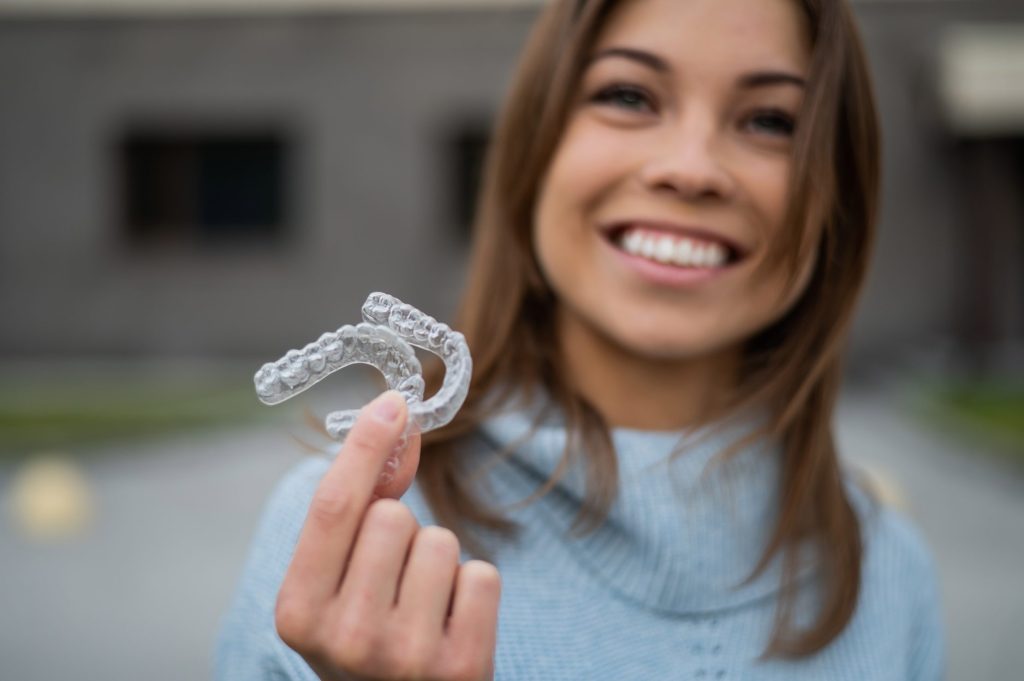Orthodontics are often mistakenly associated with teenagers and young adults. Yet braces and other devices to change the alignment of the teeth can work well for patients of practically any age. Your teeth shift slightly as you age, so even if you didn’t need braces as a younger person, you may benefit from them now. Straightening your alignment can improve your bite pattern to prevent damage to teeth surfaces, not to mention improving the appearance of your smile. Discover what kinds of orthodontic treatments are available for patients of all ages.
Traditional Metal Braces
The majority of braces installed today are still the traditional metal braces long used for orthodontic treatment. These devices may be more noticeable than other options, but they also offer the best control over the amount of adjustment. Even complex alignment issues tend to respond well to these braces. Your dentist still has options for minimizing the look of them, but you’ll appreciate how durable the metal brackets are after spending a few months dealing with them in place. Other brackets may be less noticeable, but they may need more attention from the dentist over time to stay firmly attached and in place.
Clear Braces
Clear braces use the same wires as traditional designs, but they swap the metal brackets for clear ones instead. These orthodontics rely on ceramic brackets that blend in with the surface of your tooth. It’s hard to notice these braces, especially when they’re kept clean with daily brushing and routine dentist visits. If you’re concerned about anyone noticing that you’re using braces, these may work best for you. However, the bracket materials that best blend in with your natural tooth color also tend to be slightly less durable than traditional metal brackets. If you grind your teeth or need a greater amount of adjustment to bring your teeth into alignment, it may make more sense to stick with the traditional style.
Sub-lingual and Self-Ligating Braces
Applied to the back of the teeth, sub-lingual braces are even harder to see than those with clear brackets. They can give you a moderate adjustment and don’t tend to create a lot of issues with cleaning. The one potential drawback is the tendency to lisp when they’re newly installed. Most patients adapt to talking clearly with their new braces within a few weeks, but some people may still find it harder to get crisp S-sounds when wearing these braces.
Self-ligating braces make it easier to keep your braces clean, no matter where they’re installed on the teeth. Brackets are usually attached to the archwires that put pressure on the teeth by the way of multiple small rubber bands. These bands trap food and are tricky to keep clean. Self-ligating attachments clip around the archwire with metal brackets, making it easier to remove food debris and brush the teeth. This results in better hygiene during orthodontic treatment and a lower chance of tooth decay. The orthodontist still needs to adjust the retainers to keep the fit accurate and tight, but these appointments go by much more quickly than with traditional bands.
Clear Aligners
Known by a wide range of brand names, clear aligners help guide teeth back into place with a series of custom-fit retainers. Clear plastic is used to keep the aligners harder to notice, much like how clear braces work. Each type of clear aligner system has its pros and cons, with some taking multiple years to achieve an adjustment. You generally need to wear these retainers all day and night long, although some systems are only worn during the day. They are easily removed for eating and brushing the teeth, making it easier to keep up with your oral hygiene routine as you adjust your teeth.
Orthodontic Appliances
For the most advanced level of adjustment, orthodontic appliances like dental positioners, forsus, and headgear may be necessary. These devices can change the amount of space available in the jaw. This solves overcrowding and overlapping issues that can’t be treated with braces alone. Many advanced appliances help you avoid surgical interventions for the same goal. Yet in some cases, patients will need both one of these appliances and a corresponding dental surgery to prepare for it. You may still need braces after the other appliances are removed to help shift your teeth into the new space created in the jaw.
Surgical Interventions
Orthodontic surgeries allow the dentist to adjust the space in the jaw and shape gum tissue to deal with all kinds of alignment issues. It may also include the surgical extraction of impacted teeth as well. Only a skilled orthodontic surgeon will take on this stage of treatment.
You won’t need to make up your mind right away about which orthodontic treatments you’re interested in. Just schedule an appointment here at Camelot Dental Group today and we’ll help advise you on the right type of adjustment for your smile. Whether you need to hide your braces or just want the shortest treatment time, we have something for every patient.

 Dr. Paul King
Dr. Paul King Dr. Chris King
Dr. Chris King


